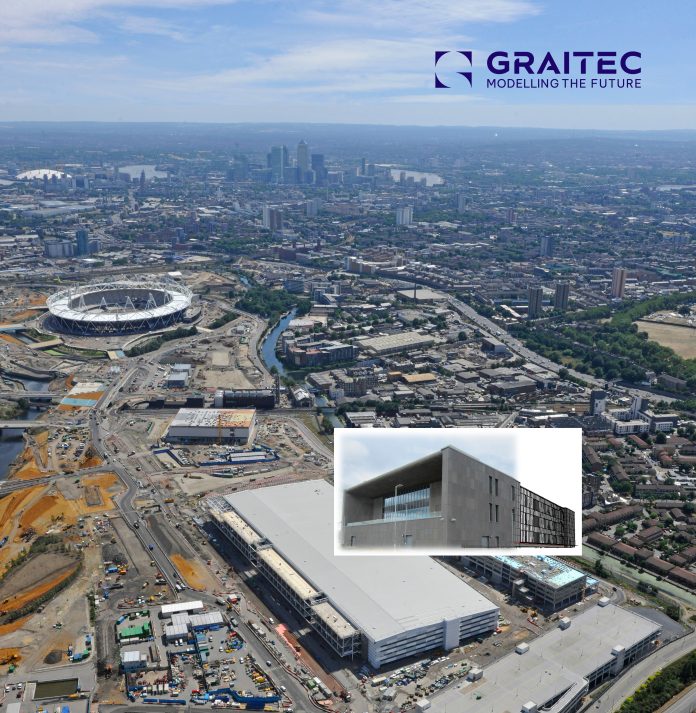Clear structures are crucial to realising the full potential of BIM data management, says Matthew Smith, BSc (Hons)/MCIAT, AEC technical manager and BIM adoption specialist at Graitec
A lot has been written, both with scepticism and wild enthusiasm, about the 2011 UK Construction Strategy mandate for public sector construction projects to adopt Building Information Modelling (BIM) Level 2 design methodologies.
While the government is encouraging construction industry players to aim further afield with the BIM Level 3 strategic plan, 90% of respondents to the 2017 National BIM Report said that the implementation of BIM would require costly changes in practices, procedures and workflows in which they weren’t prepared to invest.
During my 20 years’ experience helping construction companies streamline their processes by utilising BIM software and methodologies, I have witnessed a range of barriers to the adoption of digital tools, both on a team and project level.
Why digital infrastructure needs to be better
My view is that the biggest barrier to the adoption of BIM methodologies in construction is not so much the investment as it is the lack of uniform digital infrastructure for sharing data during the design stage and building process. Without interoperability among the different BIM platforms and elements during different phases of construction, there is no
accountability, which has led to legal disputes centred around BIM, according to the
NBS report.
The Digital Built Britain strategy calls for “a cultural environment which is cooperative, seeks to learn and share”. We cannot move on to BIM Level 3 without trust and clear accountability in construction.
A new approach to BIM data management
Here I propose a way forward based on a structured approach to BIM data management, where construction project stakeholders share a secure common data environment. Working with a prototyping mindset, where project deliverables are shared in iterations and receive rapid feedback, can help to prevent waste and costly mistakes and can lead to leaner, more sustainable designs.
In addition, aligning the project to recognised design processes can build a sense of trust and accountability among stakeholders. The RIBA plan of work is a good starting point, as most companies recognise this industry process for outlining the critical stages of a construction project.
Using Modern Methods of Construction and design automation by adopting or prototyping new software can assist with model creation and secure data sharing. It can also break down the psychological resistance of sharing project data amongst former competitors, for example, on a tender project where they were selected to work together.
Finally, access to a cloud-based Common Data Environment (CDE) that allows for regular feedback from all stakeholders and creates a clear audit trail builds further trust and establishes clear responsibilities for BIM data management.
For accurate BIM data management and to work effectively, BIM requires interoperability of data from start to finish. Every project requires different amounts of data to be shared across different design, analysis and management software platforms at every project stage.
Infrastructure and construction projects can use many types of software that don’t communicate well. Or they use different service providers for design, analysis and management, which can result in loss of data and accountability. For example, conflicting results from cost and carbon calculations during the pre-built and postconstruction phases can wrongly be attributed to the application of BIM.
To improve the accuracy of as-built energy calculations and reduce the performance gap for new buildings in compliance with the Future Homes Standard, we have to first agree on a common project environment and compatible software types.
Providing clearer information about the asbuilt specifications of new builds to both building control bodies and building occupiers requires a common “language” and a whole-life approach. A key focus for BIM today is the management of information, not just during the design and construction phase but also during the as-built and in-use phases.
“…the biggest barrier to the adoption of BIM methodologies in construction is not so much the investment as it is the lack of uniform digital infrastructure for sharing data during the design stage and building process.”
Working within a cloud-based environment is one solution that can help with the transfer of data from different environments and can provide efficient data exchanges and coordination between all stakeholders. With a clear plan for data sharing, the potential loss or missing of critical information can be prevented, resolving inefficiencies and potential errors that can have a negative impact on the overall project and running costs of a building or piece of infrastructure.
efficiencies within the building standards whilst also allowing users to be proactive in terms of asset maintenance.
The key to using BIM efficiently, as well as any other digital technology and methods, is
to keep the emphasis not on what is shared but on how it is shared. Using a common cloud-based environment for that purpose can ensure data security, proper data attribution and seamless collaboration on site and in the office.
Achieving a good return on investment with project transparency at every stage can be tricky, but here are the recommendations of an experienced external BIM consultancy that can
help. Graitec has been helping businesses with the digitisation of their projects for over 30 years.
Our BIM experts work with key business stakeholders to create standards and workflows so that teams clearly understand the approach with regard to modern design methods, data sharing and overall digitisation. A bespoke and structured software roll-out for the adoption of new technologies can unlock the BIM potential of any construction project.
A cloud-based working environment invites all stakeholders to get involved during the design and build of an asset and allows them to collaborate during the in-use phase. The ability to monitor a building or an asset and provide real-time data to the facilities manager can help achieve the required.
Matt Smith
Graitec
Tel: 0115 9691114
*Please note: This is a commercial profile.

















